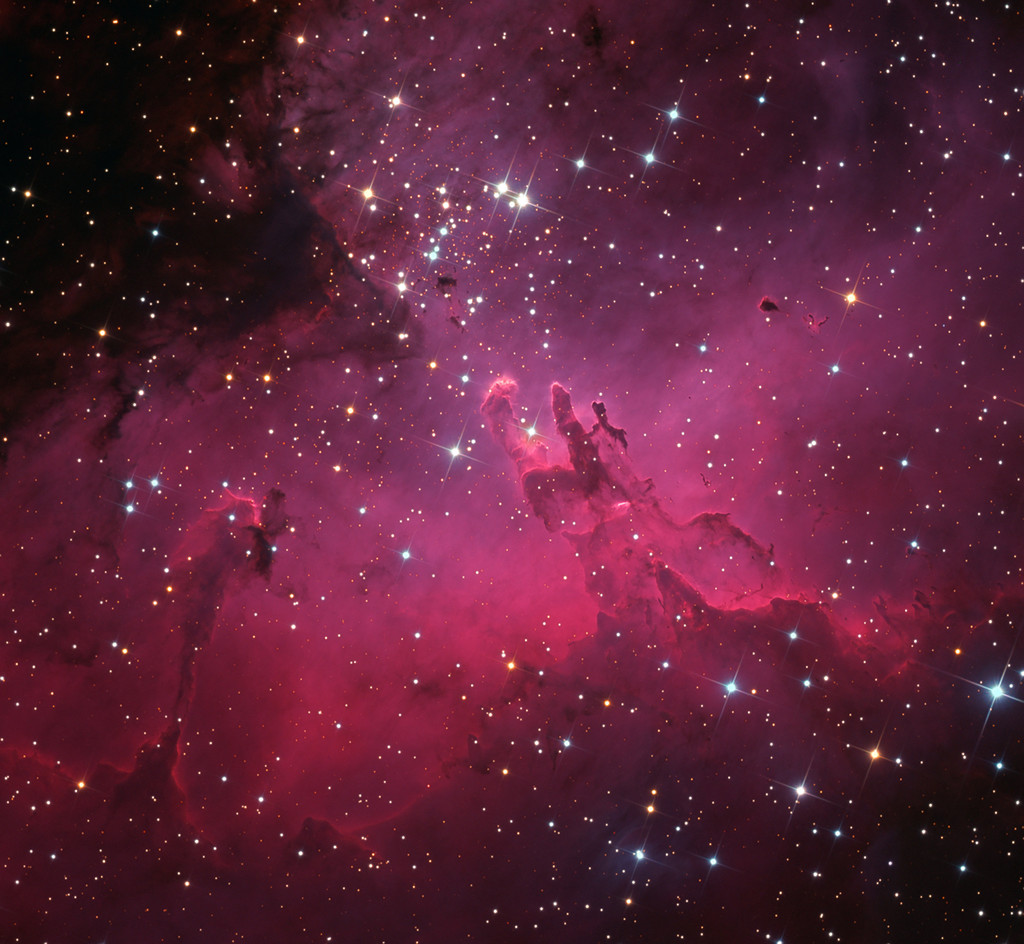M16与鹰状星云
2019 November 15
M16 and the Eagle Nebula
Image Credit & Copyright: Martin Pugh
Explanation: A star cluster around 2 million years young surrounded by natal clouds of dust and glowing gas, M16 is also known as The Eagle Nebula. This beautifully detailed portrait of the region was made with groundbased narrow and broadband image data. It includes cosmic sculptures made famous in Hubble Space Telescope close-ups of the starforming complex. Described as elephant trunks or Pillars of Creation, dense, dusty columns rising near the center are light-years in length but are gravitationally contracting to form stars. Energetic radiation from the cluster stars erodes material near the tips, eventually exposing the embedded new stars. Extending from the ridge of bright emission at lower left is another dusty starforming column known as the Fairy of Eagle Nebula. M16 lies about 7,000 light-years away, an easy target for binoculars or small telescopes in a nebula rich part of the sky toward the split constellation Serpens Cauda (the tail of the snake).
M16与鹰状星云
影像来源与版权:Martin Pugh
说明:M16亦称为鹰状星云,是一个由约200万年历史的年轻星团,及周围环绕着的尘埃和炽热气体构成的新生云团。这幅美丽细致的影像是由地面望远镜拍摄到的窄带和宽带影像数据构建而成。它呈现了由哈勃太空望远镜拍摄的恒星形成复杂体特写影像中一些著名的宇宙雕塑。影像中央附近隆起的致密尘埃柱长达数光年,也称为象鼻或创生之柱,在引力收缩作用下会不断形成恒星。来自星团中恒星的高能辐射侵蚀了云柱顶部的物质,最终暴露出其内部的新生恒星。从影像左下方的明亮发射云气脊延伸出来的是另一个恒星形成尘埃柱,也称为鹰状星云。M16距离我们约7000光年远,位于巨蛇座的尾部方向,使用双筒望远镜或小型望远镜在星云富饶的天空中很容易看到它。

